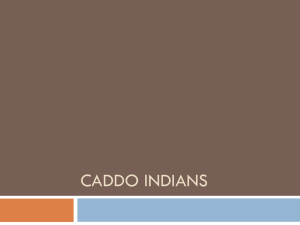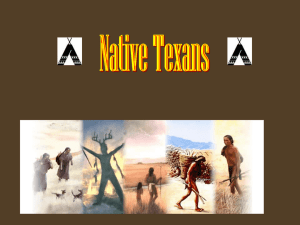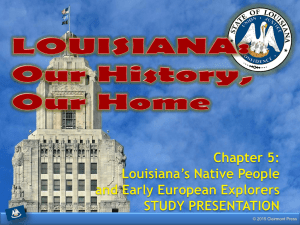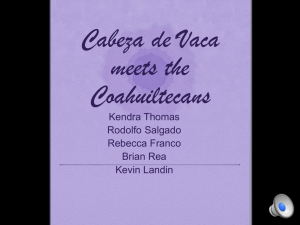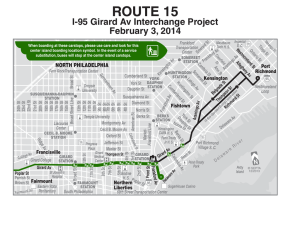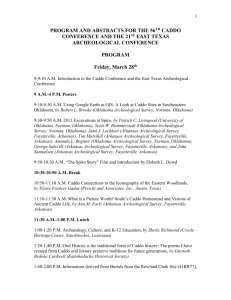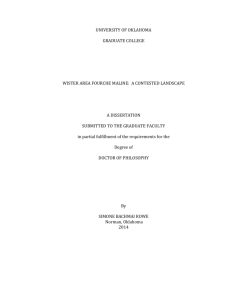caddo_indians--bounds_jason
advertisement
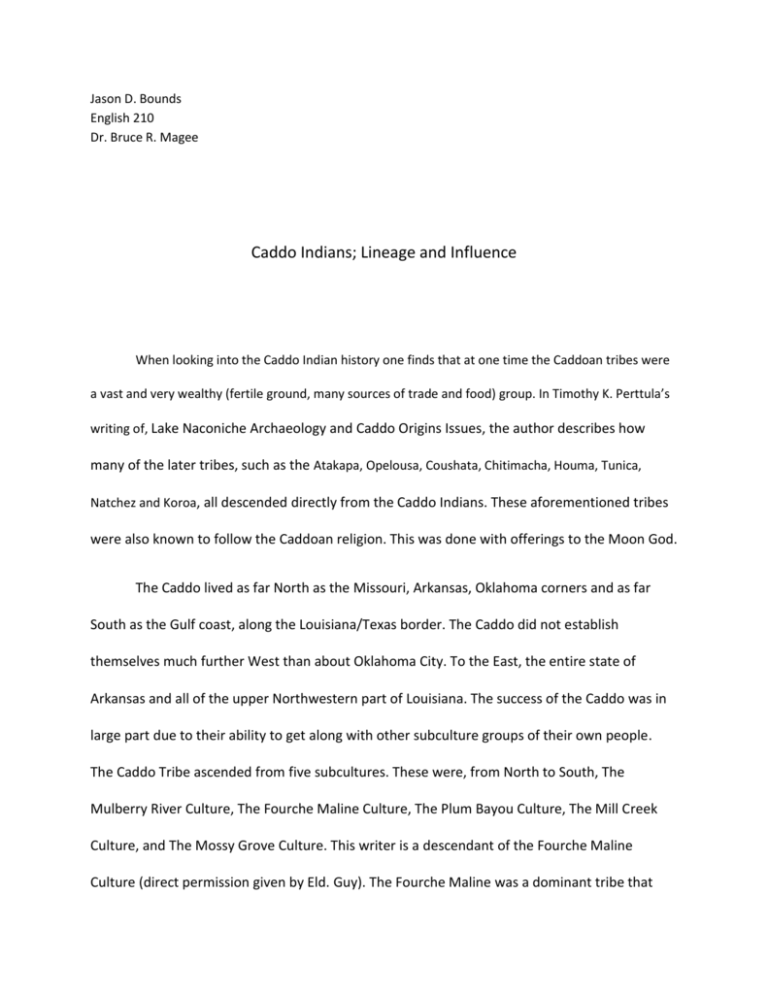
Jason D. Bounds English 210 Dr. Bruce R. Magee Caddo Indians; Lineage and Influence When looking into the Caddo Indian history one finds that at one time the Caddoan tribes were a vast and very wealthy (fertile ground, many sources of trade and food) group. In Timothy K. Perttula’s writing of, Lake Naconiche Archaeology and Caddo Origins Issues, the author describes how many of the later tribes, such as the Atakapa, Opelousa, Coushata, Chitimacha, Houma, Tunica, Natchez and Koroa, all descended directly from the Caddo Indians. These aforementioned tribes were also known to follow the Caddoan religion. This was done with offerings to the Moon God. The Caddo lived as far North as the Missouri, Arkansas, Oklahoma corners and as far South as the Gulf coast, along the Louisiana/Texas border. The Caddo did not establish themselves much further West than about Oklahoma City. To the East, the entire state of Arkansas and all of the upper Northwestern part of Louisiana. The success of the Caddo was in large part due to their ability to get along with other subculture groups of their own people. The Caddo Tribe ascended from five subcultures. These were, from North to South, The Mulberry River Culture, The Fourche Maline Culture, The Plum Bayou Culture, The Mill Creek Culture, and The Mossy Grove Culture. This writer is a descendant of the Fourche Maline Culture (direct permission given by Eld. Guy). The Fourche Maline was a dominant tribe that had great influence on the formation of the Caddo people. This was mostly due to the lack of illness that the Fourche Maline people endured. The Fourche Maline was absent many of the common diseases of the era. However, there are a few mass graves that lead one to believe that the Fourche Maline were fierce fighters. After a long battle, it is speculated, that the Fourche Maline would bring their dead back to their perspective villages and bury them all as one in only one mass grave. There have been a few archeological research projects in the NW Louisiana area. These research projects have discovered ancient pottery as old as 3000 years old (Samuelsen). Of those articles found, many pottery and utilitarian tools have been discovered and dated through the use of radiocarbon dating. However there are differences in opinions as to when and if the Caddoan people were influenced by the Mississippian Indian or by the Fourche Maline people (Girard). Girard asserts, more or less, that the Caddoan people were influenced by not only the Fourche Maline but by many people as this was a time of a nomadic people. He explains it as “a fluid time that only was able to exist due to people being transient by nature (Girard)”. In closing, there have been many of great experiences within the Caddoan people. Regardless of whom they were influenced by. We do know this; the Caddo Indians were Louisianans long before any of us. I am proud to be of this lineage and to have grown up in Caddo Parish, La. Works Cited Girard, Jeffrey S. "Comments On Caddo Origins In Northwest Louisiana." Journal Of Northeast Texas Archaeology 31.(2009): 51-60. Academic Search Complete. Web. 9 May 2012. Perttula, Timothy K. "Lake Naconiche Archaeology And Caddo Origins Issue." Journal Of Northeast Texas Archaeology 31.(2009): 61-85. Academic Search Complete. Web. 9 May 2012. Samuelsen, John R. "Geophysical Investigations Of Late Fourche Maline And Early Caddo Settlement Patterning At The Crenshaw Site (3Mi6)." Southeastern Archaeology 29.2 (2010): 261-278. Academic Search Complete. Web. 9 May 2012.
